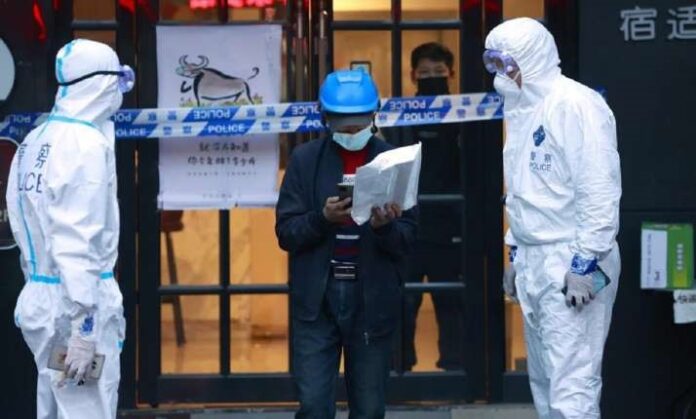| Translate This News In |
|---|
As a coronavirus outbreak spreads, China began shutting down much of its largest metropolis, Shanghai, on Monday, raising concerns about the country’s “zero-COVID” strategy’s economic impact.
Shanghai’s Pudong financial district and surrounding regions will be closed from early Monday until Friday, according to the local administration, when citywide mass testing begins. The enormous downtown area west of the Huangpu River, which divides the city, will begin its own five-day shutdown on Friday as part of the second phase of the lockdown.
To guarantee there is no interaction with the outside world, residents will be expected to stay at home and deliveries will be placed at checkpoints. All non-essential offices and companies will be shuttered, and public transportation will be shut down.
Many neighbourhoods in the 26-million-strong city have already been evacuated, with residents being forced to take multiple COVID-19 tests. Shanghai’s Disney theme park was one of the first to close.
On Sunday, Shanghai found another 3,500 cases of infection, however all but 50 were patients who tested positive for COVID-19 but did not show symptoms. China separates such cases from “confirmed cases” – those in sick patients — resulting in substantially lower daily totals.
More than 56,000 cases have been reported in China this month, with the majority of them occurring in the northeastern province of Jilin.
China has maintained its “dynamic zero-COVID” approach as the most cost-efficient and successful COVID-19 preventive technique in the face of the country’s largest epidemic in two years.
Close contacts are frequently isolated at home or in a central government facility as a result of lockdowns and mass testing. The method concentrates on removing community transmission of the virus as soon as possible, which can include shutting down entire towns.
Local officials, including Communist Party leader Xi Jinping, have advocated for more targeted efforts, fearing being fired or otherwise penalised if they fail to prevent epidemics.
With China’s economy already declining, the drastic steps are expected to exacerbate employment, consumption, and even global supply chains problems.
The vaccination rate in China is roughly 87 percent, although it is much lower among the elderly.
More than 52 million people aged 60 and up have yet to receive any COVID-19 immunisation, according to national data released earlier this month. Only 56.4 percent of persons aged 60 to 69 and 48.4 percent of people aged 70 to 79 have received a booster dose.


















